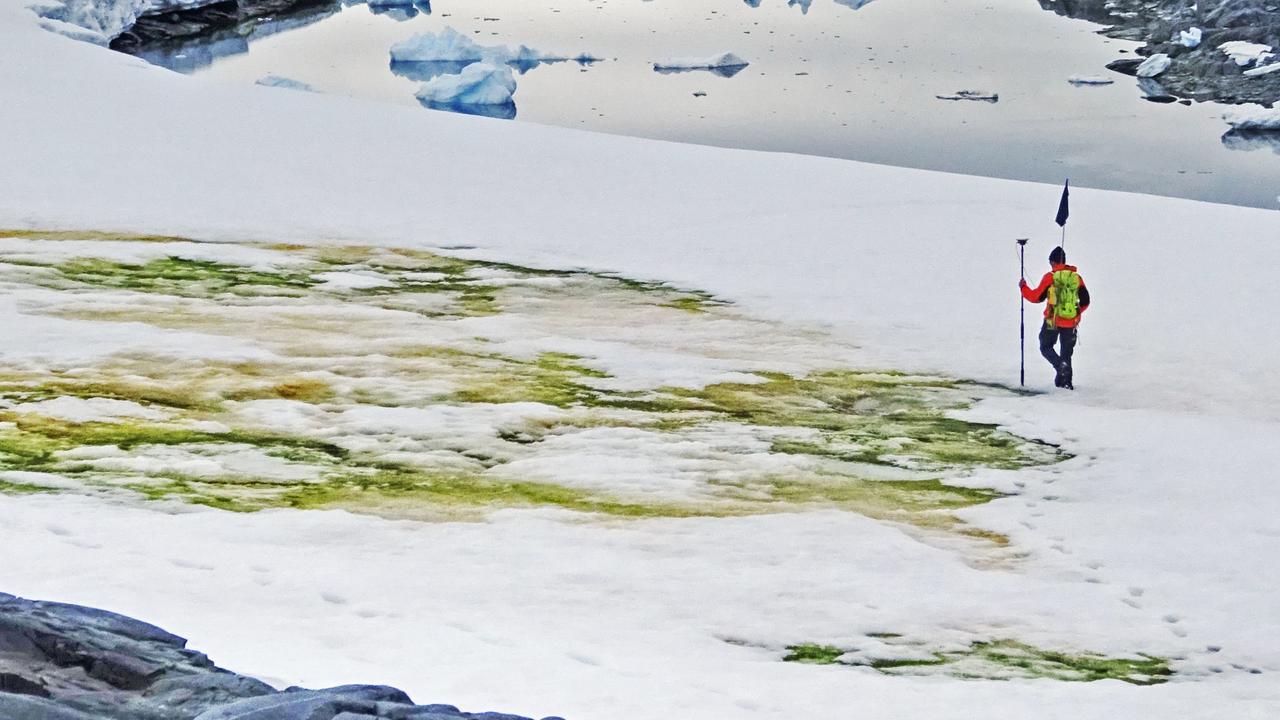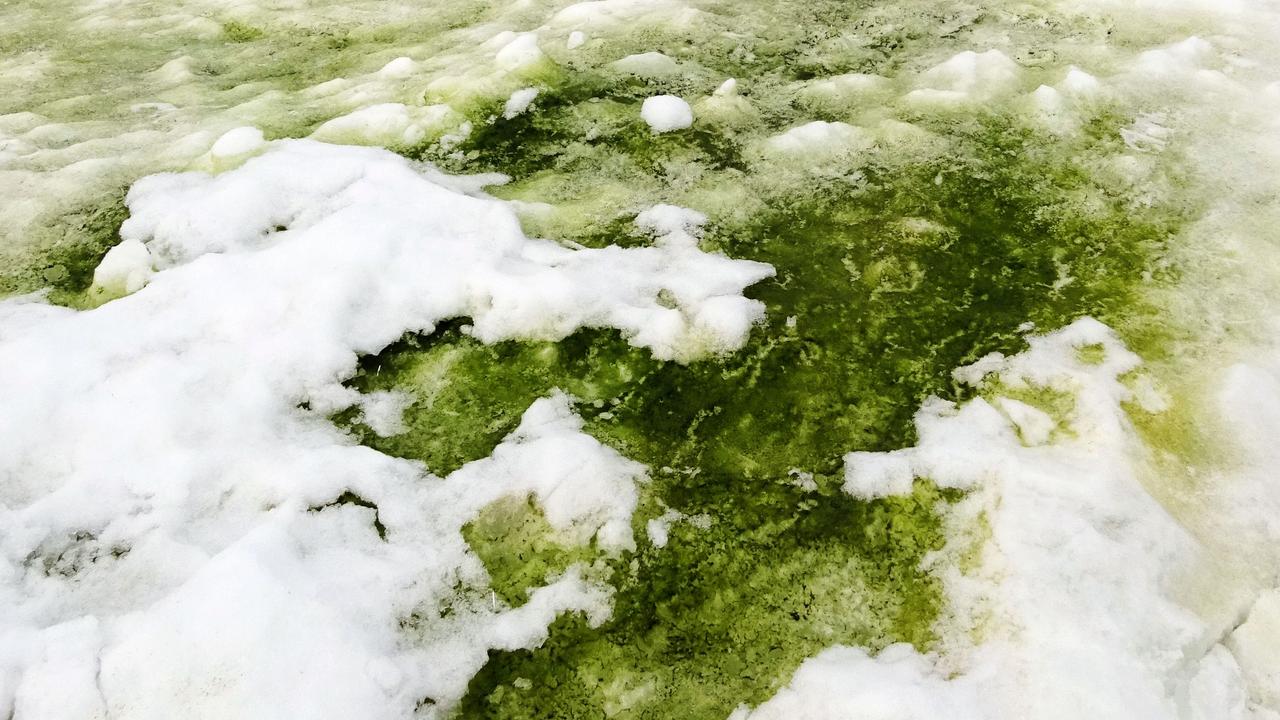Climate change is turning Antarctica's snow green and the effects can now be seen from space
What should be a wilderness of white ice caps has been invaded by an eerie green tinge so widespread it’s now visible from space.
Warming temperatures due to climate change have resulted in a spread of "green snow" in Antarctica, the extent of which is now visible from space.
New research published on Wednesday from the University of Cambridge and the British Antarctic Survey showed the first map of these algae blooms, which help soak to soak up CO2 from the atmosphere.
Using data collected by the European Space Agency’s Sentinel 2 satellite over the past two years, they reported the spread of was particularly prominent along the Antarctic Peninsula coast and is expected to increase due to global warming. This is because the slushy melting snow provides the perfect environment for these microscopic organisms to thrive.


In their research, scientists identified more than 1600 separate green algae blooms on snow across the peninsula, with a combined surface area of 1.9 square kilometres. They also calculated a total of 875,000 average car journeys worth of CO2 is currently absorbed by the algae colony. Although red and orange algae blooms have also been seen on Antarctica, this was not documented in the study.
Speaking to AFP, plant and algal physiologist from Cambridge’s Department of Plant Sciences, Matt Davey said the increase biomass is “highly significant”.
“Even though the numbers are relatively small on a global scale, in Antarctica where you have such a small amount of plant life, that amount of biomass is highly significant,” he said.
“A lot of people think Antarctica is just snow and penguins. In fact when you look around the fringe there is a lot of plant life.”
RELATED: Blood red algae blooms hit Antarctica
RELATED: Penguin poo is funny. Science says so
Due to warming polar regions, researchers predicted algae will gradually disappear from low-lying areas of the Antarctic due to snow-free summers.
Despite this, they hypothesised there will be “really large blooms” in the north of the peninsular due to the melting snow, the volume of which will “more than offset” lost algae.

Although algae is highly proficient at absorbing CO2, researchers predict it could have a small but adverse impact on local albedo, or how much of the Sun’s heat is reflected back from Earth’s surface. While white snow reflects 80 per cent of radiation that hits it, the figure for green snow is closer to 45 per cent.
The team said, however, that the reduced albedo is unlikely to impact Antarctica’s climate on any meaningful scale.
“There will be more carbon locked up in future just because you need snow to be in a slushier state for algae to bloom,” said Evans.
“We expect there to be more suitable habitat and overall more carbon sequestration.”
– written with AFP



